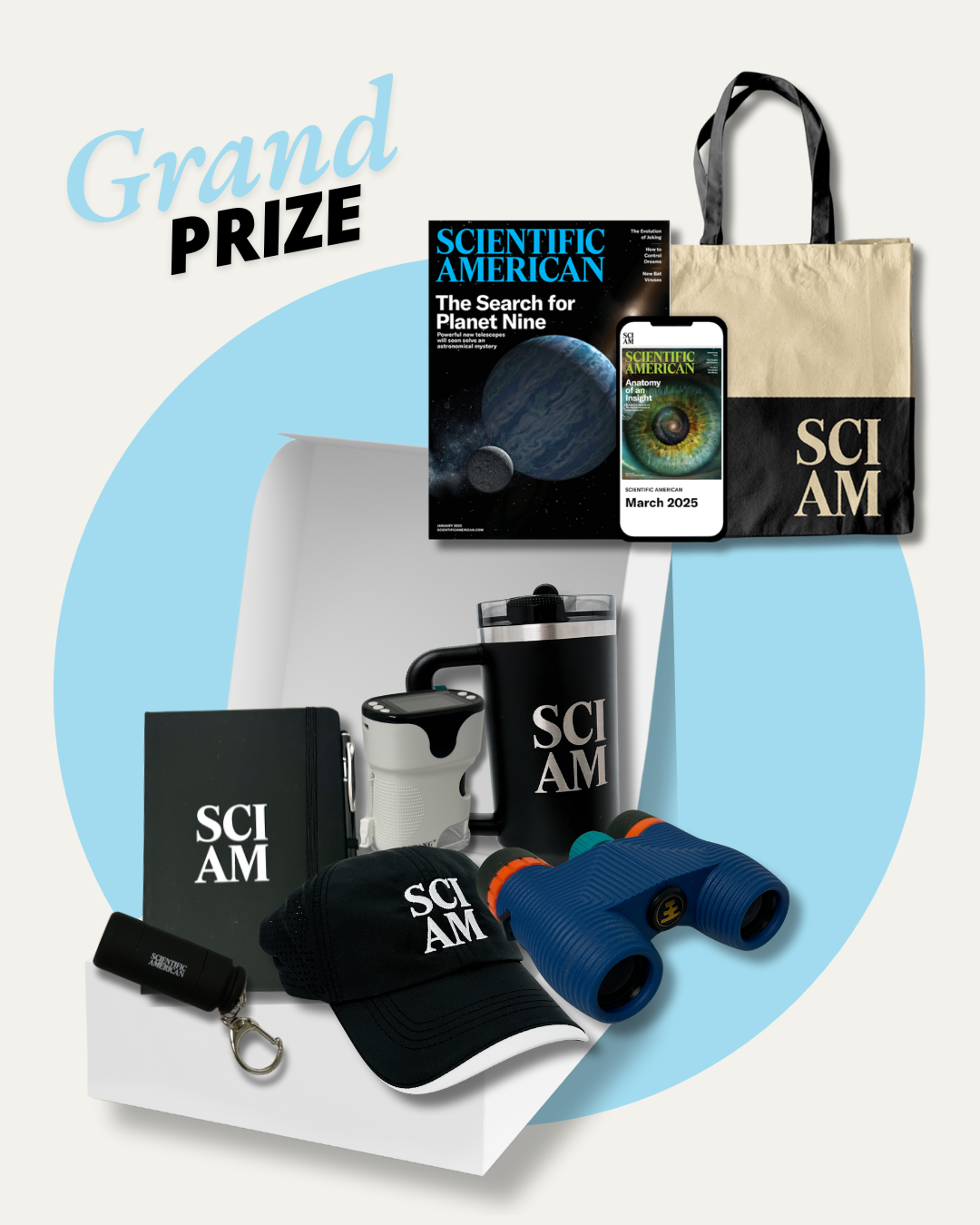A free, daily newsletter for exciting science discovery ͏ ͏ ͏ ͏ ͏ ͏ ͏ ͏ ͏ ͏ ͏ ͏ ͏ ͏ ͏ ͏ ͏ ͏ ͏ ͏ ͏ ͏ ͏ ͏ ͏ ͏ ͏ ͏ ͏ ͏ ͏ ͏ ͏ ͏ ͏ ͏ ͏ ͏ ͏ ͏ ͏ ͏ ͏ ͏ ͏ ͏ ͏ ͏ ͏ ͏ ͏ ͏ ͏ ͏ ͏ ͏ ͏ ͏ ͏ ͏ ͏ ͏ ͏ ͏ ͏ ͏ ͏ ͏ ͏ ͏ ͏ ͏ ͏ ͏ ͏ ͏ ͏ ͏ ͏ ͏ ͏ ͏ ͏ ͏ ͏ ͏ ͏ ͏ ͏ ͏ ͏ ͏ ͏ ͏ ͏ ͏ ͏ ͏ ͏ ͏ ͏ ͏ ͏ ͏ ͏ ͏ ͏ ͏ ͏ ͏ ͏ ͏ ͏ ͏ ͏ ͏ ͏ ͏ ͏ ͏ ͏ ͏ ͏ ͏ ͏ ͏ ͏ ͏ ͏ ͏ ͏ ͏ ͏ ͏ ͏ ͏ ͏ ͏ ͏ ͏ ͏ ͏ ͏ ͏ ͏ ͏ ͏ ͏ ͏ ͏
August 13, 2025—A towering column of cosmic dust, a glacial dam bursts in Alaska, and a new branch of humanity discovered. —Andrea Gawrylewski, Chief Newsletter Editor | | Kelso Harper/Scientific American | | - Meltwater from a glacial lake outburst is flooding Juneau, Alaska. Such events are likely to happen more often as climate change destabilizes ice and glacial lakes fill with more meltwater. | 2 min read
- Ancient teeth found in Ethiopia belong to an entirely new species in the Australopithecus genus of human ancestors. | 2 min read
- A new hormone-free birth control pill that reversibly stops sperm production has passed its first safety trial in humans. | 10 min listen
- Many people are turning to applications such as OpenAI's ChatGPT for life guidance and therapy. But using a chatbot this way comes with serious ethical and privacy risks, experts say. | 6 min read
| |  Snap, share, and win! Snap, share, and win!
Celebrate 180 years of Scientific American with our SciAm in the Wild photo contest. You could win a one-year Unlimited subscription, science gadgets and exclusive gear. Entering is easy! Snap a photo of any Scientific American cover in a great setting, share the image on your social media (or email it to us), and you're entered to win!
Full contest instructions here. | |
How it formed: Herbig-Haro objects, brilliant columns of ionized gas, can form when a star is born. They result from the remnants—gas and dust—of the flurry of star formation. Those materials can clump up and form planets, remain floating as dust and meteors or get shot out in a powerful jet of plasma and create a Herbig-Haro object. A closer look: The telescope captured this field of dust and debris just as a baby protostar (probably located somewhere on its lower right, outside the boundary of the image shown here) was blasting it into this shape. The fuzzy blob at the top resolves into a distant spiral galaxy unrelated to the object itself. Its apparent position atop this ongoing event is just a quirk of our perspective.
What the experts say: This view, and the great distance, also creates a few other optical illusions, says Macarena Garcia Marin, an astrophysicist at the European Space Agency who was part of the team that took the new image. For example, the smaller dots appearing to float in front of the cosmic tornado aren't dust; they're actually entire galaxies shining through from behind it. The pointy dots are lone stars. | | | | |
This newsletter is sponsored by California Correctional Healthcare Services (CCHCS) | | More Elevated Care
Bring your ability to handle intricate clinical cases to our unique patient population and practice elevated mental health care. Join CCHCS! | | | | |
- Temperatures in the Arctic have been rising more than three times faster than the global average, climate scientists Rick Thoman, Matthew L. Druckenmiller and Twila A. Moon wrote in 2024 after a record-breaking 2023 summer of heat in the Arctic. "For many people living in the Arctic, climate change is already disrupting lives and livelihoods," they say. Warming temperatures are triggering ice and permafrost melt, wildfires, animal population loss and disruptions to plant growth. Many of these factors feed off each other and accelerate effects, they say. It's a "reminder of what's a stake, both the risks as the planet warms and the lives and cultures already being disrupted by climate change." | 5 min read
| | - 10 bizarre "voids" appeared in the clouds above an uninhabited island near Antarctica in 2016, spotted in this satellite photo. | Live Science
- To study how Vikings explored the seas, this archeologist took 26 voyages in a traditional Norse boat. | The New York Times
- Supermodel Heidi Klum is using supplements and herbs to "cleanse" her body of parasites. Doctors say it's medically unfounded and potentially dangerous. | MedPage Today
| | Check out some of the cool places our covers are appearing in the world. It's your turn to give it a try! Take any issue of Scientific American out into the wild and snap a photo. Follow these instructions to enter the contest. Here's to 180 years of discovery!
| | Send any questions about the contest, comments and other feedback to: newsletters@sciam.com. See you tomorrow! —Andrea Gawrylewski, Chief Newsletter Editor
| | | | |
Subscribe to this and all of our newsletters here. | | | | |

